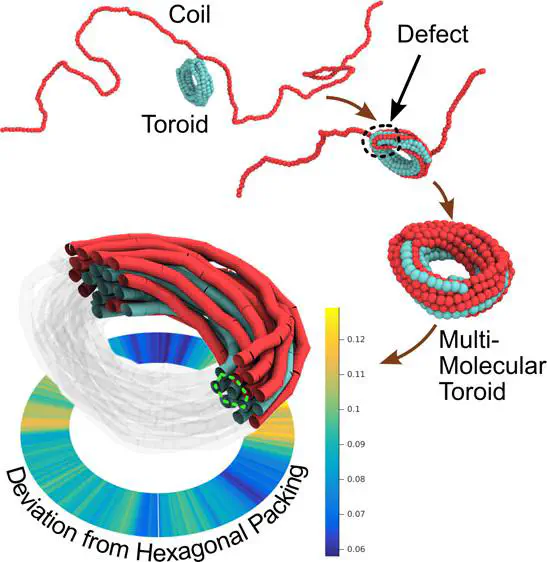Toroidal Condensates by Semiflexible Polymer Chains: Insights into Nucleation, Growth and Packing Defects
 Image credit: G. Reddy
Image credit: G. Reddy
Abstract
Deciphering the principles of DNA condensation is important to understand problems such as genome packing and DNA compaction for delivery in gene therapy. DNA molecules condense into toroids and spindles upon the addition of multivalent ions. Nucleation of a loop in the semiflexible DNA chain is critical for both the toroid and spindle formation. To understand the structural differences in the nucleated loop, which cause bifurcation in the condensation pathways leading to toroid or spindle formation, we performed molecular dynamics simulations using a coarse-grained bead–spring polymer model. We find that the formation of a toroid or a spindle is correlated with the orientation of the chain segments close to the loop closure in the nucleated loop. Simulations show that toroids grow in size when spindles in solution interact with a pre-existing toroid and merge into it by spooling around the circumference of the toroid, forming multimolecular toroidal condensates. The merging of spindles with toroids is facile, indicating that this should be the dominant pathway through which the toroids grow in size. The Steinhardt bond order parameter analysis of the toroid cross section shows that the chains pack in a hexagonal fashion. In agreement with the experiments there are regions in the toroid with good hexagonal packing and also with considerable disorder. The disorder in packing is due to the defects, which are propagated during the growth of toroids. In addition to the well-known crossover defect, we have identified three other forms of defects, which perturb hexagonal packing. The new defects identified in the simulations are amenable to experimental verification.